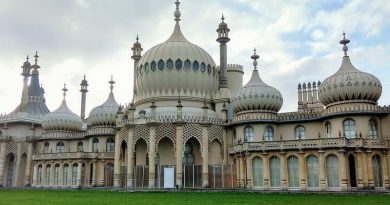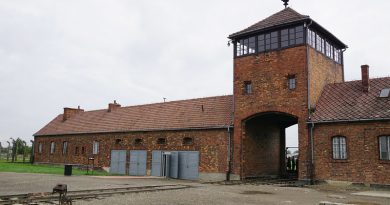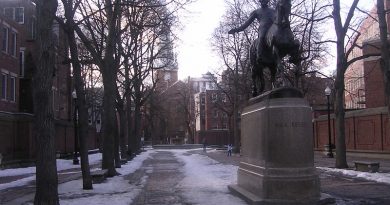The Invention of the Nuclear Bomb
The invention of the nuclear bomb began in London in the early 1930s and ended in the New Mexico desert when the the first nuclear bomb was detonated in July 1945 Later, the US dropped an atom bomb on Hiroshima, killing an estimated 135,000 people.
Leo Szilard, a Hungarian-born Jew had fled Germany for the UK after Adolf Hitler became chancellor. He arrived in a country that was then at the forefront of nuclear physics. James Chadwick had just discovered the neutron and Cambridge physicists soon “split the atom”. They broke a lithium nucleus in two by bombarding it with protons, verifying Albert Einstein’s insight that mass and energy were one and the same, as expressed by the equation E = mc2.
Szilard reasoned that if you could find an atom that was split by neutrons and in the process emitted two or more neutrons, then a mass of this element would emit vast amounts of energy in a self-sustaining chain reaction.
Szilard pursued the idea with little success. It wasn’t until 1938 that the breakthrough came – ironically in the Nazi capital Berlin, where German physicists Otto Hahn and Fritz Strassman bombarded uranium atoms with neutrons. When they analysed the debris they were stunned to find traces of the much lighter element barium.
Meanwhile Italian physicist Enrico Fermi, who had fled Fascism and was working at Columbia University in New York, discovered that uranium fission released the secondary neutrons that were needed to make the chain reaction happen. Szilard soon joined Fermi in New York.
Together they calculated that a kilogram of uranium would generate about as much energy as 20,000 tonnes of TNT. Szilard already saw the prospect of nuclear war. “There was very little doubt in my mind that the world was headed for grief,” he later recalled.
The scientists feared the Nazis knew about these breakthroughs and agreed that Einstein would be the best person to alert President Roosevelt to the danger. Einstein’s famous letter was sent soon after the outbreak of war in Europe, but had little impact.
Horrified at the prospect of a Nazi bomb, scientists also wrote to the British government urging prompt action. . It led to the initiation of the British bomb project, codenamed Tube Alloys.
The letter also galvanised the US into action. In April 1940 the government appointed the veteran physicist Arthur Compton to head a nuclear weapons programme, which eventually became the Manhattan Project.
The bombing of Pearl Harbor in December 1941 added further impetus. A year later the Manhattan Project team was ready to attempt a chain reaction.Once the reaction was confirmed, Szilard shook hands with Fermi and said: “This will go down as a black day in the history of mankind.”
Over the next four years the US, UK and Canada poured vast resources into the Manhattan Project. Tube Alloys continued for a while but was eventually absorbed into the US project. The Nazis initiated a nuclear weapons programme but made little progress.
It was the physicist , Robert Oppenheimer , whose name became most associated with the bomb.
Oppenheimer attended Harvard University, where he earned a bachelor’s degree in chemistry in 1925. He studied physics at the University of Cambridge and University of Göttingen, where he received his PhD in 1927. He held academic positions at the University of California, Berkeley, and the California Institute of Technology, and made significant contributions to theoretical physics, including in quantum mechanics and nuclear physics.
Recruited to work on the Manhattan Project, in 1943 was appointed as director of the Los Alamos Laboratory in New Mexico, tasked with developing the weapons. Oppenheimer’s leadership and scientific expertise were instrumental in the success of the project. He was among those who observed the Trinity test on July 16, 1945, in which the first atomic bomb was successfully detonated.
The test was final, terrible proof that nuclear energy could be weaponised, and prompted Oppenheimer to recall a passage from the Hindu scripture, Bhagavad Gita: “I am become death, the destroyer of worlds.”
The attacks on Japan started a worldwide arms race. Following 1945, the US developed massively destructive hydrogen bombs, which exploited nuclear fusion rather than fission. The Soviets developed and tested their own bomb in 1949. The world’s nuclear arsenal now stands at about 27,000 bombs.
After the war ended, Oppenheimer became chairman of the influential General Advisory Committee of the newly created United States Atomic Energy Commission. He lobbied for international control of nuclear power, to avert nuclear proliferation and a nuclear arms race with the Soviet Union. He opposed the development of the hydrogen bomb during a 1949–1950 governmental debate on the question and subsequently took stances on defense-related issues that provoked the ire of some U.S. government and military factions. During the Second Red Scare, those stances, together with past associations Oppenheimer had with people and organizations affiliated with the Communist Party, led to the revocation of his security clearance in a much-discussed security hearing in 1954. Effectively stripped of his direct political influence, he continued to lecture, write, and work in physics.
Thanks to information courtesy of New Scientist Magazine and Wikipedia




